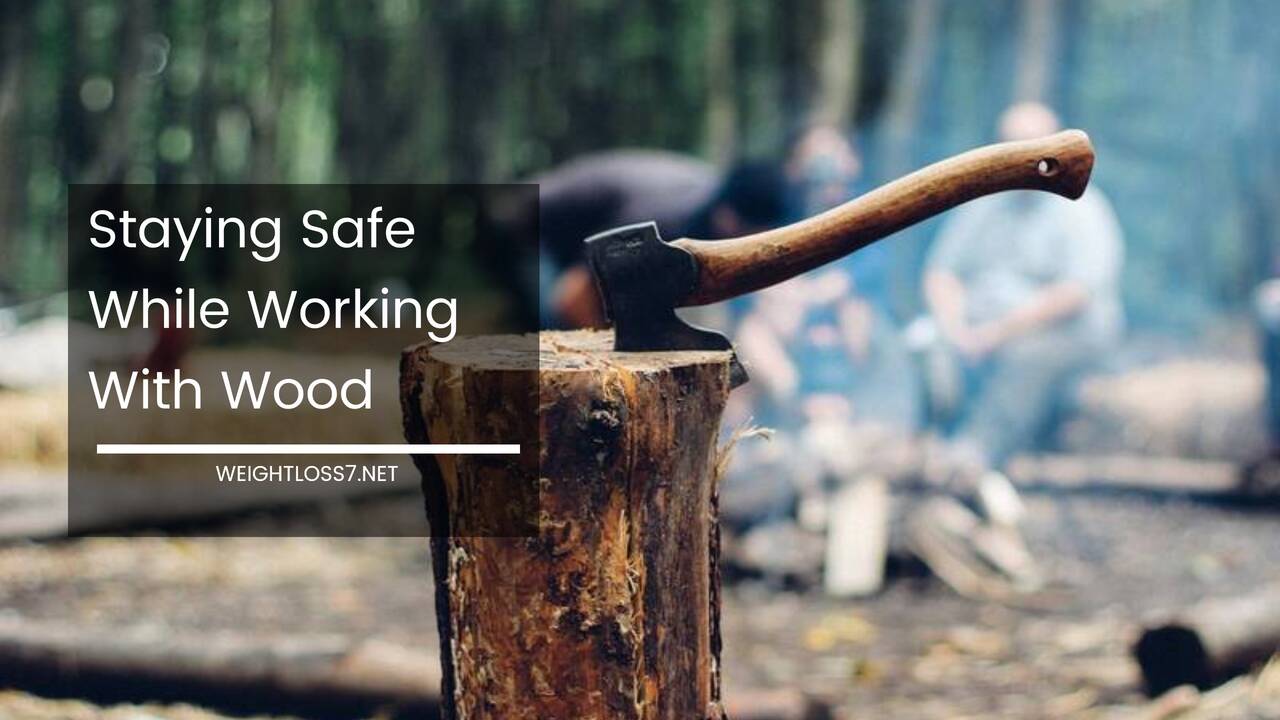Staying Safe While Working With Wood

Woodworking can be a rewarding and fascinating hobby or vocation, yet people don’t realize how dangerous it can be.
Perhaps it’s because woodworking is considered so old-fashioned compared to things like metalworking, but building things out of wood can be risky for a number of reasons.
The tools that are used need to be kept sharp, and they can cut through a hand as easily as a piece of wood. Even the slivers and sawdust that come with the territory can be problematic for some people.
All of this isn’t intended to scare anybody away from working with wood.
On the contrary, it’s something that just about everybody should try at least once. As we said before, woodworking can be very rewarding as long as you stay safe.
Here are some important safety tips to keep in mind whether you are building something for the first time or you are experienced in this vocation.
Woodworking Machines and Tools
The most important thing to remember when it comes to woodworking tools and machines is to understand that they can be dangerous in the wrong hands.
They are perfectly safe as long as you know what you are doing, but this still means that you need to know what you’re doing.
Before you operate any piece of machinery, take the time to learn how it works.
Read the instruction manual, get advice from someone more experienced than you and take the required safety classes before doing anything at all with the machine.
You should also take precautions with tools as well.
Knives, chisels and other blades should be kept sharp since dull tools are harder to use and are more likely to cause an injury. Damaged tools should be thrown away and not be kept with the good tools.
Safety Equipment
Safety equipment includes heavy gloves, safety goggles, a heavy apron and anything else that could protect you from injury.
Depending on the work you may be doing, not all of these may be necessary, but they shouldn’t be ignored either.
Safety goggles will protect your eyes from sawdust or flying pieces of wood if you’re working with power tools, but they aren’t as crucial if you’re carving wood with a knife or a chisel.
Safety gloves will protect your hands from splinters and minor cuts from knives and other blades. Much of what you need will depend on the task being performed, so make sure you have what you need before you get started.
Keeping a Neat Workshop
Neatness is a big part of being safe. Dropped nails can be stepped on, old blades kept among piles of wood can cut hands and power cords can trip people as they walk by.
Before you leave a workshop for any reason or for any length of time, make sure everything is put in its place and all walkways are clear of debris.
In many ways, woodworking safety really comes down to common sense. As long as you are aware of your surroundings and know how to properly use your machinery and equipment, you should remain safe as you work.
However, you should also always remember that there is no such thing as being too cautious in any workshop, no matter how experienced you may be.

















